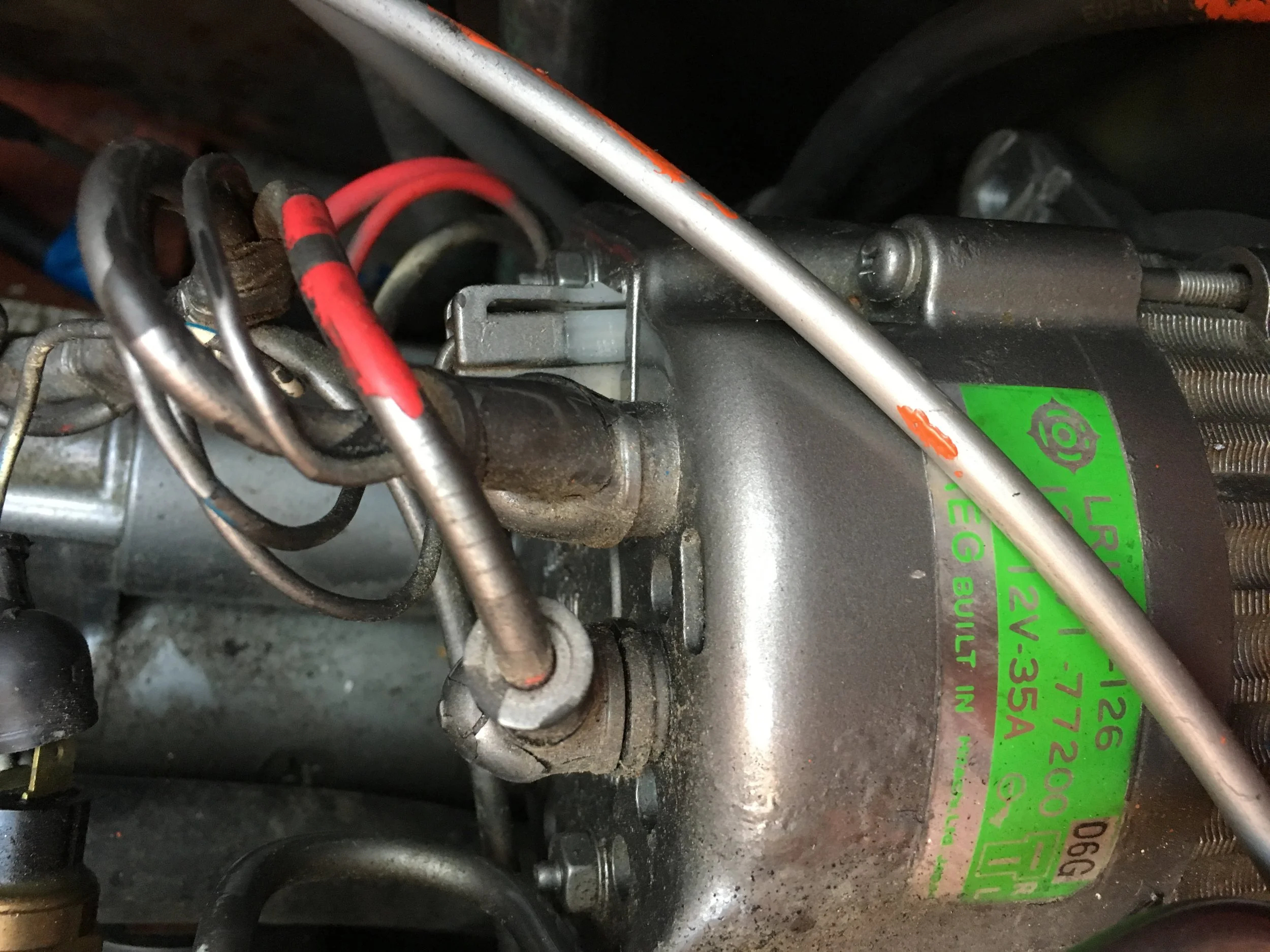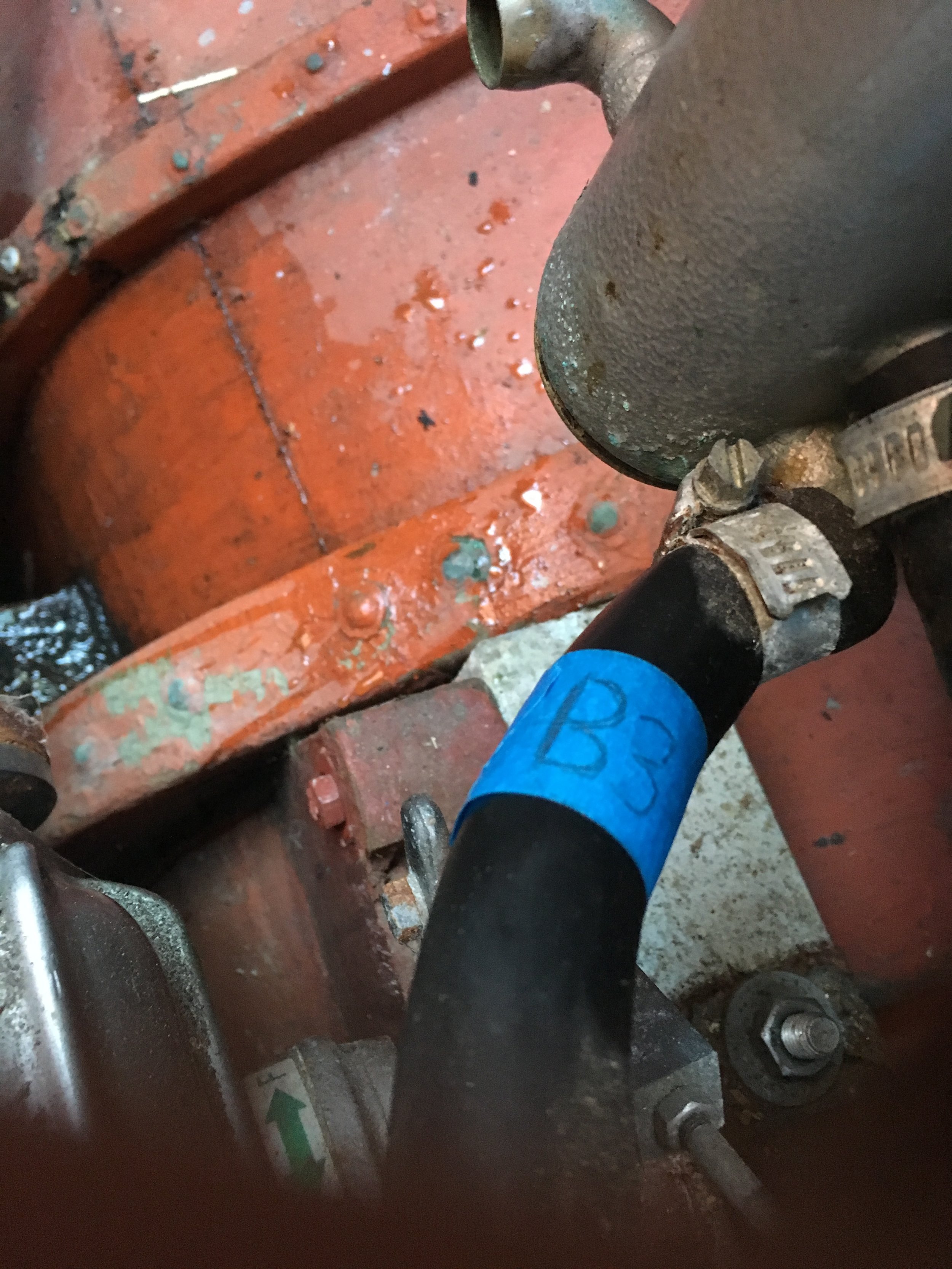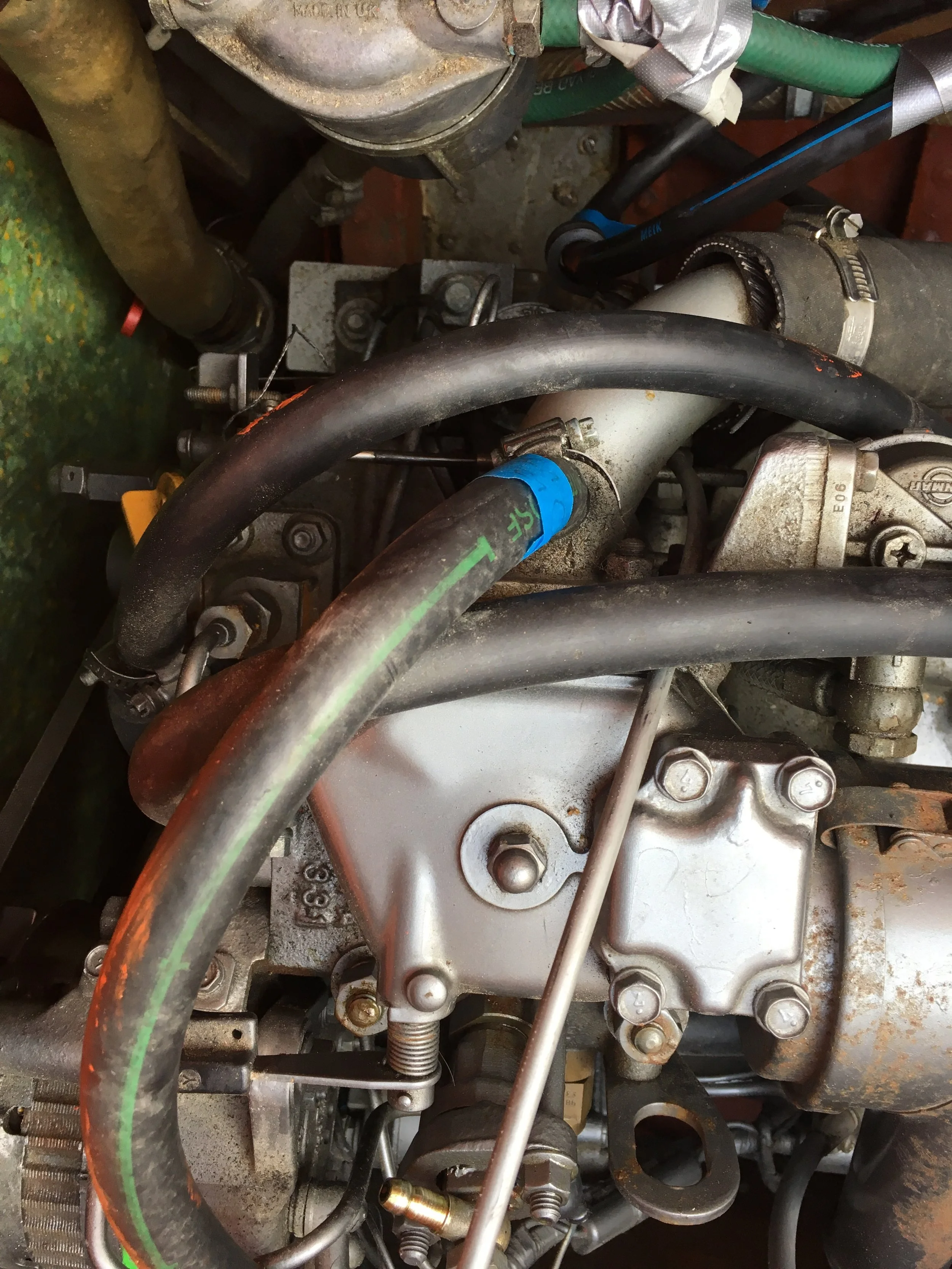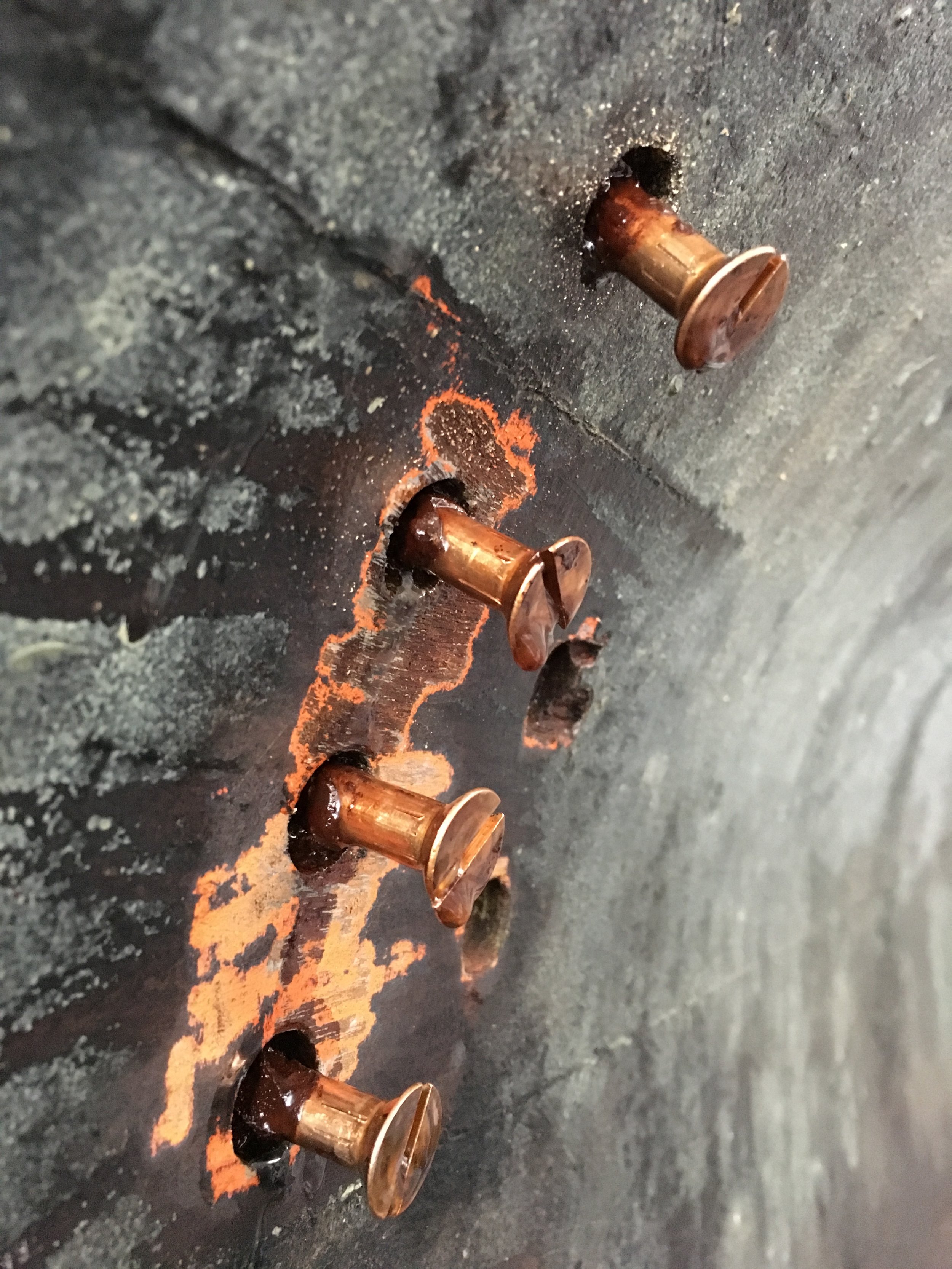Everything was ready to instal the engine so while waiting for Anders I finished driving all remaining screws to floor timber and new (repaired) frames.
Following Börje’s advice I dope the screw in linseed oil before driving it into oak. That makes it easier - less friction. Additionally I bed them in Farm80 to further seal the joint.
I have also finished fastening the floor timber to the new frame - this time driving bronze rods with a drill went smooth. Thanks to linseed oil again. I think I’m becoming linseed oil fanatic - like Börje. This thing is cheap, smells nice and makes wonders with the wood.
Then came installing wooden plugs, to close holes occupied by rivets and screws. There are as many ways of installing plugs as boat owners. The classical way is to dope the plug in oil varnish and tap it into the hole. Under waterline red lead was used instead of varnish. Some people skip plugs under water and close the hole with some kind of putty. Few such were on Meritaten - it was epoxy fairing compound. Oh, how I cursed onto the one who did that! To remove this thing - to access the screw - took me five times longer than to remove normal plug. I promised myself not to do that on my boat - ever!
The role of the plug is to close the hole. It can leak before it swells with the surrounding wood - at least this is what I know. It is not a structural element and it withstands no forces so all is needed is that it sits there and makes the hull smooth and possible to paint. The second role of the plug is that it should be easy to remove.
So no glue if the plug is just a plug above the screw.
That’s theory. It works on new boats when plug holes are nice and round, wood is new and plugs can be installed with tight fit. On older boats the holes can get slightly worn - bigger or irregular. That’s why epoxy or Sika is being used.
In my case I’ve decided to bed them in Farm 80 - relatively dense to bridge few gaps, can be painted over and does not glue parts together. In most cases I needed to hammer in (rubber hammer) the plugs - holes are still in pristine shape. In few cases there was some play so Farm should bridge these gaps.
After cleaning the excess/squeeze-out I’ve left them to cure. Tomorrow I will cut and sand them flush with the hull and prime with järnmönja.
After another water spraying on the hull I went to search Anders - it was already afternoon and I wanted to have this engine installed today. Anders was in the harbour - there was an incident: Staika, big Laurinkoster (39 foot, 10 tons) has been dropped into water during yet another approach to put her into sea. The reason was that the trailer got loose while going down the ramp so the boat went uncontrolled down into the water. Luckily nobody was hurt - only boat’s rudder got broken. And the trailer landed deep on the bottom. I helped a bit in rescue action, talked with Anders if we indeed manage to put my engine and went back to work.
When I was already heading home - packed tools and washed myself - came Amders with the crane. Well - now or never! We’ve lifted my renovated Yanmar into place, all went smoothly so it took about 20 minutes only.
It turned out that the alternator is just a hair from cockpit support beam. It might be that I’ll need to cut the beam a bit if the grooved belt could not be tighten at this position. I’ll check tomorrow.
With all that done I think I’ll manage to hold the time plan and go to water next week.
What is left:
sanding the freeboard and valdeck - scotch-brite this year as I sanded with 220 grid last year
vacuuming the hull
varnishing
cutting and sanding plugs on the bottom
priming with mönja
bottom paint
mainsail track installation
connecting the engine and trials
finishing supports for remaining parts of the cabin floor (durk)
installing batteries for engine and bilge pump
buying and installing one more bilge pump
The plan for tomorrow is sanding and varnishing. Varnish needs to cure so I will use this time to finish all other tasks from the list.


































































